What's in a Civet? -Part II
Taking up where I left off yesterday, the civet de cuisses de canard for two is in the making.
The civet is a French dish that many cooks simply overlook because they see all the recipes and treatises on how it just isn't a Civet unless you enrich the sauce with the blood of the animal in the dish. Such purism is truly unfortunate, because it can be a really succulent and rich way of treating whatever game or poultry is available to you, and this dish should not be cast aside just because our customs and market practices have pretty much ruled out the idea of being able to purchase the fresh game blood to enrich the sauce. Any recipe calling the cook drain the blood of freshly slaughtered game into a recipient to set aside for later use harkens to another time, I'm afraid. That is just not going to happen unless you are a hunter. But even though I live in the city, I did not let that stop me, nor should it stop you.
 I appreciate the quality and richness on the palate that such an enrichment brings, recalling something from dishes like boudin noir or figatelli - by all means we should try our best to achieve something like it when we prepare this dish. But I will stick to my guns and say that the animal's blood is not the actual ingredient that makes this dish what it is. Onions are. Otherwise it would not be named a Civet! It is certainly fine to use pureed poultry livers at the end. It will be delicious. We will enjoy it.
I appreciate the quality and richness on the palate that such an enrichment brings, recalling something from dishes like boudin noir or figatelli - by all means we should try our best to achieve something like it when we prepare this dish. But I will stick to my guns and say that the animal's blood is not the actual ingredient that makes this dish what it is. Onions are. Otherwise it would not be named a Civet! It is certainly fine to use pureed poultry livers at the end. It will be delicious. We will enjoy it.
So - where were we?
Note about salt: I don't add any salt to this dish until it is ready to serve for two reasons. The first reason is that I will be braising the duck legs with salt cured ham, which will render a salty flavor to the dish, and the second is that roughly 2 quarts of stock and wine are reduced down to about 1 1/2 cups for the final sauce before enrichment. Therefore, it's really best to wait, and don't give in to the reflex to add salt at any step until the end.
The duck has marinated with the mushrooms, onions and garlic, carrots, celery, etc. in red wine overnight. It is now time to prepare for the braising.
 Remove the duck and the vegetables and herbs from the marinade, putting the duck on one plate and the vegetables in the other. Save everything, because it will all go into the pot.
Remove the duck and the vegetables and herbs from the marinade, putting the duck on one plate and the vegetables in the other. Save everything, because it will all go into the pot.

Heat up the duck fat in a skillet over medium high heat, and put the duck pieces in, skin side down. Things will sizzle and pop.

Reduce the heat to about medium and leave them to brown for at least 5 minutes. Don't flip them, don't hover, don't bother them for at least those 5 minutes. The skin side will brown to a nice deep golden brown and the pan will release them cleanly when they're ready to flip. Flip them to the other side, and leave them again. When the meat has properly browned, the sizzling sound will not be as loud and noisy, it will quiet down. Transfer the duck legs to a heavy casserole, a heavy enamel covered cast iron pot. If you don't have one, use your heaviest covered braising dish.

Don't turn off the heat under the skillet. Chop the cured country ham or jambon de pays into little pieces and brown them in the same skillet. Transfer them to the casserole.


Tie the herbs which were in the marinade into a bouquet and add to the cooking pot. Put half of the marinade vegetables into the skillet in one layer and brown them in the hot fat. Transfer them to the casserole, and brown the remaining half as you did the first one.
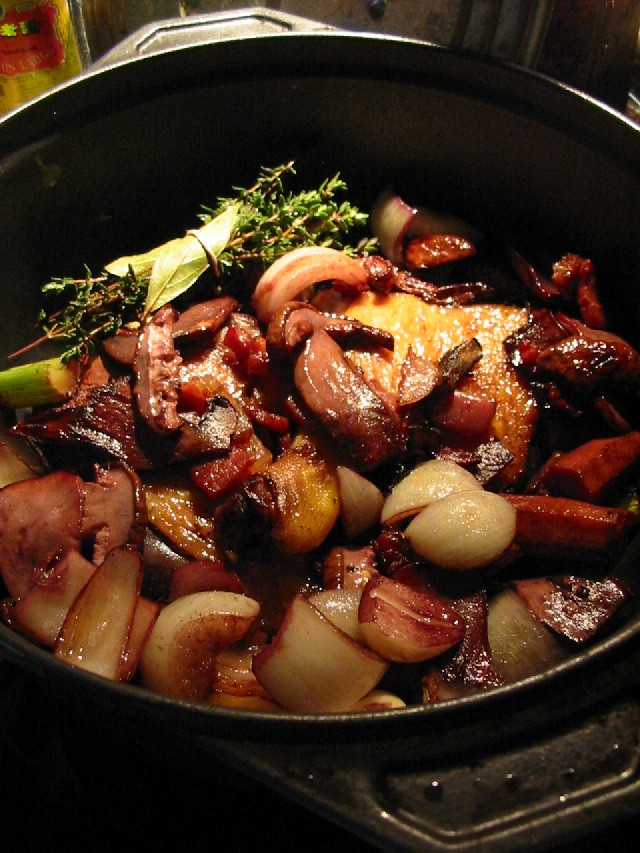 - Open the oven and prepare the rack inside to receive your casserole- the rack must be low enough to take it. Heat the oven to 160C. or 325F. While the oven is heating, pour off whatever hot fat remains in your skillet, and return it to the burner. Pour the wine into the skillet. While it bubbles, with a wooden spoon or spatula, scrape up anything that's stuck to the bottom, and then reduce the wine to about 1 cup.
- Open the oven and prepare the rack inside to receive your casserole- the rack must be low enough to take it. Heat the oven to 160C. or 325F. While the oven is heating, pour off whatever hot fat remains in your skillet, and return it to the burner. Pour the wine into the skillet. While it bubbles, with a wooden spoon or spatula, scrape up anything that's stuck to the bottom, and then reduce the wine to about 1 cup.

Add the reduced wine to the cooking pot with the duck, ham, veggies, etc. Cut the remaining onions, into 8 pieces and add them to the cooking pot. Add the couenne. Peel the remaining shallots and garlic and add them whole to the pot. Add about three cups of rich poultry broth to the pot, and bring to a slow boil.
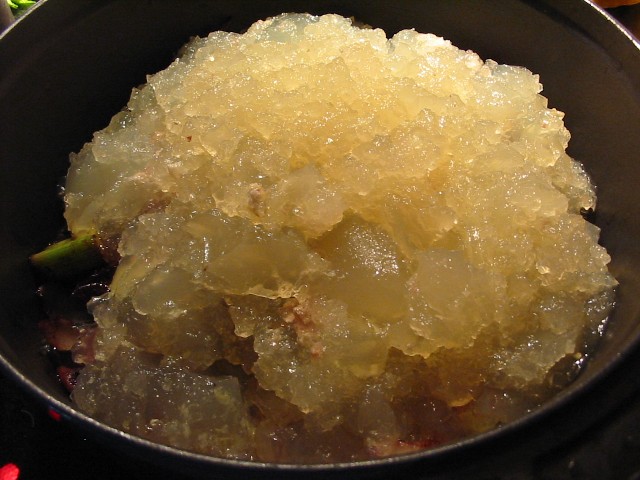 My weekly poultry stock is normally made with chicken wings, duck wings, and guinea hen necks, plus whatever carcasses I have around. It turns to jelly when it's cold but melts at room temperature. If you need help preparing a basic stock, let me know. I'll help you.
My weekly poultry stock is normally made with chicken wings, duck wings, and guinea hen necks, plus whatever carcasses I have around. It turns to jelly when it's cold but melts at room temperature. If you need help preparing a basic stock, let me know. I'll help you.
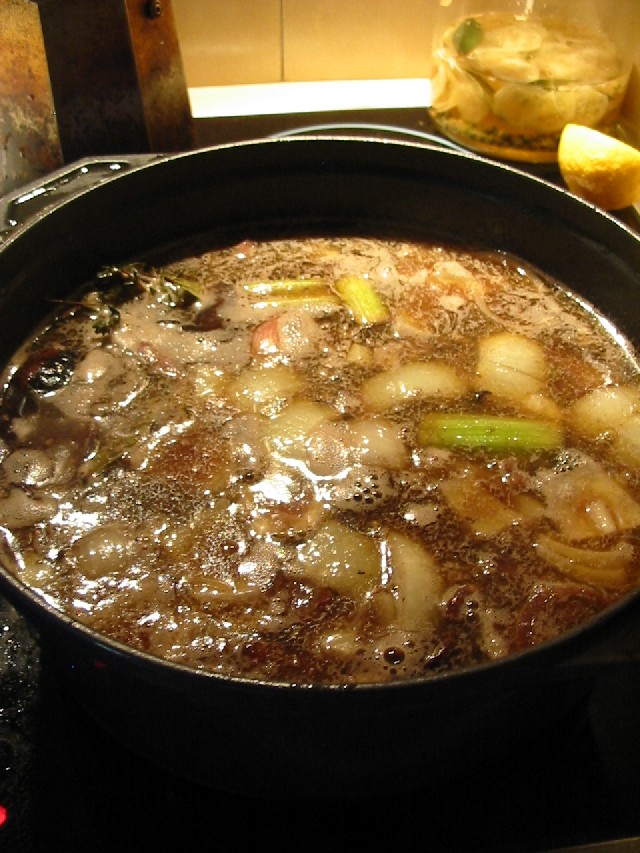
Skim for 5 minutes, cover, and place the casserole in the oven. Let it cook for 2 and a half hours without disturbing it.

Normally what the good cook will do at this point is clean the kitchen and take care of other kitchen tasks. Once the dishwasher's loaded, the knives clean, dried and put on their rack, and you've got your hands deep a bowl of boiled duck wings leftover from your weekly broth, removing the rich dark meat for rilettes or dumplings, a certain perfume will overtake you and your special sense will be stirred with the rare song of pure gourmandise. You haven't even put one bite of this civet in your mouth but the sensation caused by the luscious perfume will take you to that higher plane. You will move to the buffet in the hall with a sense of satisfied purpose, straightening dishes and replacing some that you used. The neighbors may slow their step by your door as they pass your apartment on the way upstairs, and dwell for a moment. Outside your window on the street, several more people than usual will pause at the window of the Bang Olufson boutique, pretending to be contemplating the newest wireless speaker system.
When the timer says so, remove the casserole from the oven and check to see if the duck legs have relaxed. The meat will seperate from the bone when coaxed, but not falling off. If it is not ready yet, return it to the oven for another 1/2 hour. When it does come out and the meat checks done, set it on the stove to cool to room temperature. When it's cool enough, transfer it to the refrigerator.
Tomorrow: We get to eat it!
The civet is a French dish that many cooks simply overlook because they see all the recipes and treatises on how it just isn't a Civet unless you enrich the sauce with the blood of the animal in the dish. Such purism is truly unfortunate, because it can be a really succulent and rich way of treating whatever game or poultry is available to you, and this dish should not be cast aside just because our customs and market practices have pretty much ruled out the idea of being able to purchase the fresh game blood to enrich the sauce. Any recipe calling the cook drain the blood of freshly slaughtered game into a recipient to set aside for later use harkens to another time, I'm afraid. That is just not going to happen unless you are a hunter. But even though I live in the city, I did not let that stop me, nor should it stop you.
 I appreciate the quality and richness on the palate that such an enrichment brings, recalling something from dishes like boudin noir or figatelli - by all means we should try our best to achieve something like it when we prepare this dish. But I will stick to my guns and say that the animal's blood is not the actual ingredient that makes this dish what it is. Onions are. Otherwise it would not be named a Civet! It is certainly fine to use pureed poultry livers at the end. It will be delicious. We will enjoy it.
I appreciate the quality and richness on the palate that such an enrichment brings, recalling something from dishes like boudin noir or figatelli - by all means we should try our best to achieve something like it when we prepare this dish. But I will stick to my guns and say that the animal's blood is not the actual ingredient that makes this dish what it is. Onions are. Otherwise it would not be named a Civet! It is certainly fine to use pureed poultry livers at the end. It will be delicious. We will enjoy it.So - where were we?
Note about salt: I don't add any salt to this dish until it is ready to serve for two reasons. The first reason is that I will be braising the duck legs with salt cured ham, which will render a salty flavor to the dish, and the second is that roughly 2 quarts of stock and wine are reduced down to about 1 1/2 cups for the final sauce before enrichment. Therefore, it's really best to wait, and don't give in to the reflex to add salt at any step until the end.
The duck has marinated with the mushrooms, onions and garlic, carrots, celery, etc. in red wine overnight. It is now time to prepare for the braising.
 Remove the duck and the vegetables and herbs from the marinade, putting the duck on one plate and the vegetables in the other. Save everything, because it will all go into the pot.
Remove the duck and the vegetables and herbs from the marinade, putting the duck on one plate and the vegetables in the other. Save everything, because it will all go into the pot.
Heat up the duck fat in a skillet over medium high heat, and put the duck pieces in, skin side down. Things will sizzle and pop.

Reduce the heat to about medium and leave them to brown for at least 5 minutes. Don't flip them, don't hover, don't bother them for at least those 5 minutes. The skin side will brown to a nice deep golden brown and the pan will release them cleanly when they're ready to flip. Flip them to the other side, and leave them again. When the meat has properly browned, the sizzling sound will not be as loud and noisy, it will quiet down. Transfer the duck legs to a heavy casserole, a heavy enamel covered cast iron pot. If you don't have one, use your heaviest covered braising dish.

Don't turn off the heat under the skillet. Chop the cured country ham or jambon de pays into little pieces and brown them in the same skillet. Transfer them to the casserole.


Tie the herbs which were in the marinade into a bouquet and add to the cooking pot. Put half of the marinade vegetables into the skillet in one layer and brown them in the hot fat. Transfer them to the casserole, and brown the remaining half as you did the first one.
 - Open the oven and prepare the rack inside to receive your casserole- the rack must be low enough to take it. Heat the oven to 160C. or 325F. While the oven is heating, pour off whatever hot fat remains in your skillet, and return it to the burner. Pour the wine into the skillet. While it bubbles, with a wooden spoon or spatula, scrape up anything that's stuck to the bottom, and then reduce the wine to about 1 cup.
- Open the oven and prepare the rack inside to receive your casserole- the rack must be low enough to take it. Heat the oven to 160C. or 325F. While the oven is heating, pour off whatever hot fat remains in your skillet, and return it to the burner. Pour the wine into the skillet. While it bubbles, with a wooden spoon or spatula, scrape up anything that's stuck to the bottom, and then reduce the wine to about 1 cup.
Add the reduced wine to the cooking pot with the duck, ham, veggies, etc. Cut the remaining onions, into 8 pieces and add them to the cooking pot. Add the couenne. Peel the remaining shallots and garlic and add them whole to the pot. Add about three cups of rich poultry broth to the pot, and bring to a slow boil.
 My weekly poultry stock is normally made with chicken wings, duck wings, and guinea hen necks, plus whatever carcasses I have around. It turns to jelly when it's cold but melts at room temperature. If you need help preparing a basic stock, let me know. I'll help you.
My weekly poultry stock is normally made with chicken wings, duck wings, and guinea hen necks, plus whatever carcasses I have around. It turns to jelly when it's cold but melts at room temperature. If you need help preparing a basic stock, let me know. I'll help you. 
Skim for 5 minutes, cover, and place the casserole in the oven. Let it cook for 2 and a half hours without disturbing it.

Normally what the good cook will do at this point is clean the kitchen and take care of other kitchen tasks. Once the dishwasher's loaded, the knives clean, dried and put on their rack, and you've got your hands deep a bowl of boiled duck wings leftover from your weekly broth, removing the rich dark meat for rilettes or dumplings, a certain perfume will overtake you and your special sense will be stirred with the rare song of pure gourmandise. You haven't even put one bite of this civet in your mouth but the sensation caused by the luscious perfume will take you to that higher plane. You will move to the buffet in the hall with a sense of satisfied purpose, straightening dishes and replacing some that you used. The neighbors may slow their step by your door as they pass your apartment on the way upstairs, and dwell for a moment. Outside your window on the street, several more people than usual will pause at the window of the Bang Olufson boutique, pretending to be contemplating the newest wireless speaker system.
When the timer says so, remove the casserole from the oven and check to see if the duck legs have relaxed. The meat will seperate from the bone when coaxed, but not falling off. If it is not ready yet, return it to the oven for another 1/2 hour. When it does come out and the meat checks done, set it on the stove to cool to room temperature. When it's cool enough, transfer it to the refrigerator.
Tomorrow: We get to eat it!
Labels: Autumn, Civet, Classic French Cooking, Summer 06
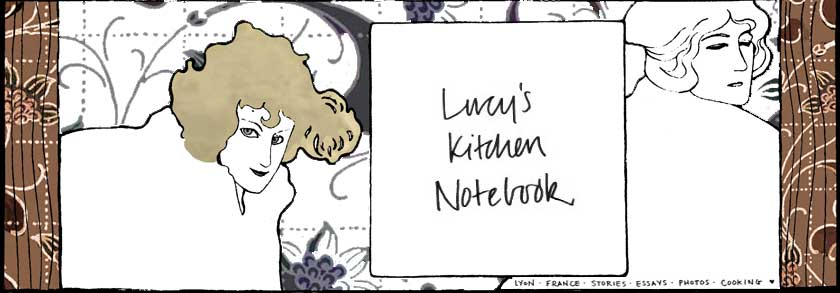


























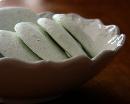








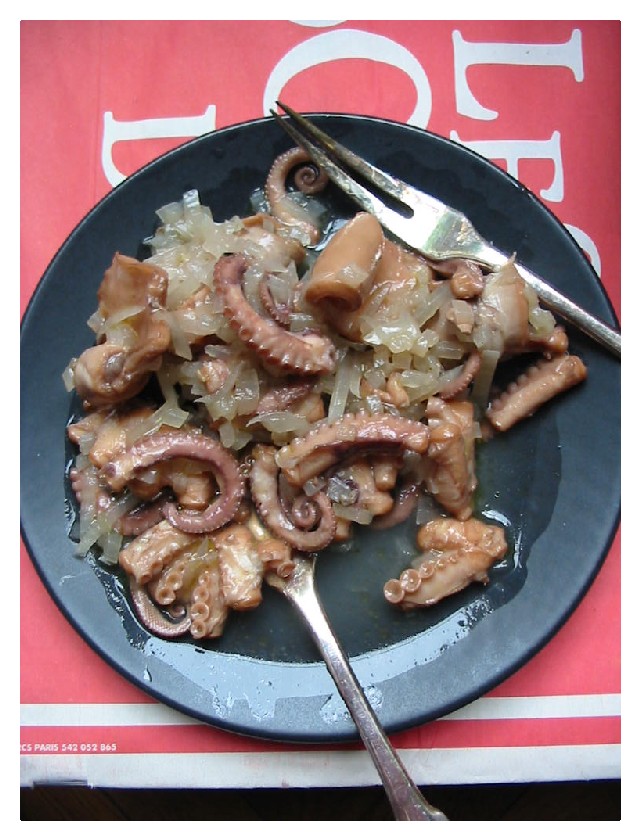


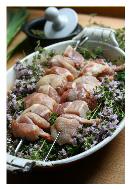













5 Comments:
It is all about not touching meat while searing! So many people fuss with the meat beforehand...bad idea
The work you have done here is truly impressive. The photos could be in a food magazine.
lovely presentation. step-by-step instruction is always helpfull. however, as a vegetarian, i think i like the hydrangea picture the best. i bed your kitchen smelled wonderful.
'you have a wonderful sight...oh, the pictures are magnificent. I can not wait to read on. I see Mimi has an interest also....she is correct about your talents! Bravo to you!
Dear franchini, you have inspired me to write a blog entry on my weekly stock. Coming soon!
Post a Comment
<< Home